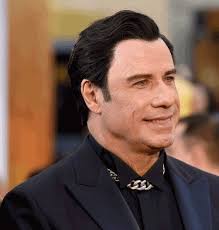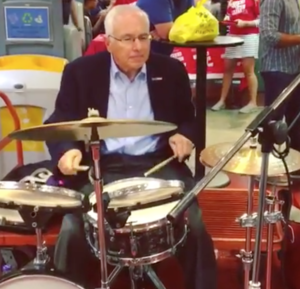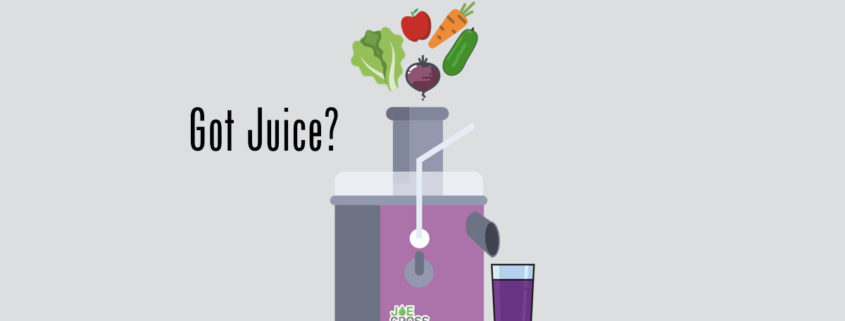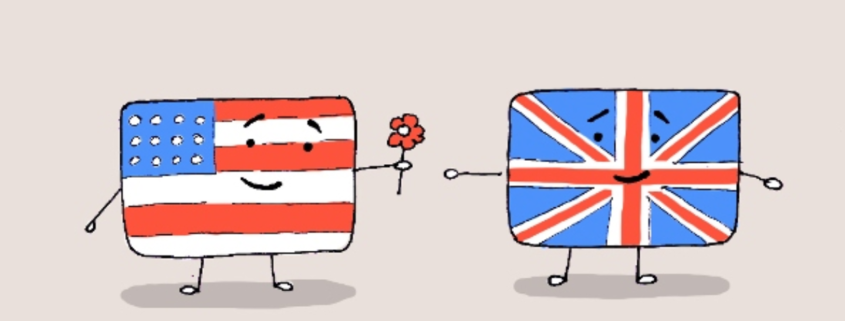Fifty Shades of Gray…Hair
On my last visit to the barber, I couldn’t help but notice that as my hair was cut away, that what was once black was now gray. More than that, I was starting to look and consider whether I had more black or more gray hair. This was a bit disturbing.

Proof I once had mostly black hair.

That was then, this is now.
I suppose I should be thankful that I am reaching a more acceptable age for graying – and that at least there is still a bit of pepper.
I come by it honestly, as my father apparently had his first gray hair at age 4 and had graying temples as a teenager. I have few memories of my father without gray hair, and as I think fondly of my dear old Dad, my sensibility about gray hair may be more positive than others.
By most accounts, I am also lucky to be a man with gray hair as opposed to a woman. People often say that gray hair on a man makes him look distinguished or even cool. People are generally not as forgiving for woman in this area.
Then there is the big, profound question:
To Dye or Not To Dye?
While it is completely acceptable for woman to dye their hair (even when they don’t have gray ones to hide), dyeing for men has more of a stigma.
I know of some contemporaries of mine who make the choice to dye and more power to them.

One of my issues with it is that if it isn’t done well, it looks awful. Way worse than the gray hair. Also, once you journey down that path, it can be difficult to return.

The stage between a person who has dyed their hair for a long time and then decides to return to their natural color can be a bit awkward.
I have some friends who say I am lucky and should be thankful that my hair is going gray and not simply going…
All of this has me thinking about what it means to age gracefully. For a few years now I find myself sometimes complaining to my wife about getting old. Her usual response is that if I’m complaining in my forties about being old, what will I be like at sixties (probably a gray haired grumpy old man).
As each year passes, I find myself trying to balance the need and desire to hold on to the charms of youth, while admitting and accepting the inevitable changes that come with getting old..er.
My father, who is in his late seventies, has said for years, he doesn’t feel the number of his age. After all, age is simply a number.
Being in the marketing field, I am acutely aware that appearing youthful is at a premium. Between fashion magazines or Hollywood, the search for the fountain of youth is constant. There are several billion dollar industries aimed at trying to keep us “young.” Organizations are often looking to hire fresh new talent (which is usually much cheaper) than retaining or seeking those with a bit more salt in their coif.
Is it better to hire a younger, go-getter or someone with more experience? I suppose it depends what the role is that you are seeking to fill and the make-up of your organization. There are advantages to having team members who have not yet been molded in any particular fashion as you build internal culture. There are also huge benefits to having co-workers who can bring their experience to the table.
Of course, age is only one factor. Whether hiring within your organization, or engaging a partner to work with, it is critical to look at the whole number of characteristics. Age certainly does not dictate attitude. As an adjunct professor, some of my students are positive, dynamic and engaged, while some appear negative and apathetic. A friend of mine who has since passed away, was energetic and full of life at 85! I joke that age does not equal maturity, which may explain why I get along with kids so well.  My dad is yet another example, as he plays he plays his drums with the same youthful enthusiasm I image he did 50 years ago!
My dad is yet another example, as he plays he plays his drums with the same youthful enthusiasm I image he did 50 years ago!
Now that I have growing children, I find myself embracing both the aging process and remaining young at heart, even if my children won’t remember me before I turned into a silver-haired Dad.
I may not be as quick on the basketball court as I once was, but I’m still out there playing with gusto and enjoying the game. Perhaps that is the point – enjoy the game – whatever your age.




















 Although Britain and America are on friendly terms, celebrating the 4th of July last week reminded me they weren’t always. Living in Philadelphia and passing by Independence Hall from time to time symbolizes this previous struggle of the colonists and their oppressors.
Although Britain and America are on friendly terms, celebrating the 4th of July last week reminded me they weren’t always. Living in Philadelphia and passing by Independence Hall from time to time symbolizes this previous struggle of the colonists and their oppressors.
 In England and Manchester in particular, what football/soccer team you support is extremely important. With two major teams in Manchester (United and City), I was asked very often by people “Who do you support?” For ten years, I would give the same answer – The Eagles, which always returned a curious look. Hey, you can take the Eagles fan out of Philly, but you can’t take the Philly out of an Eagles fan!
In England and Manchester in particular, what football/soccer team you support is extremely important. With two major teams in Manchester (United and City), I was asked very often by people “Who do you support?” For ten years, I would give the same answer – The Eagles, which always returned a curious look. Hey, you can take the Eagles fan out of Philly, but you can’t take the Philly out of an Eagles fan!



